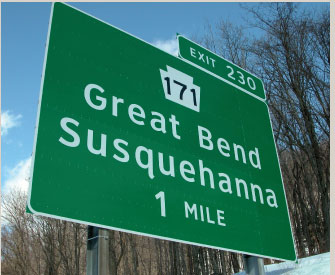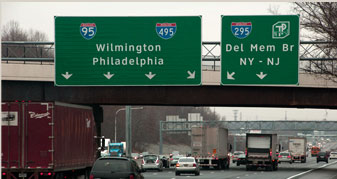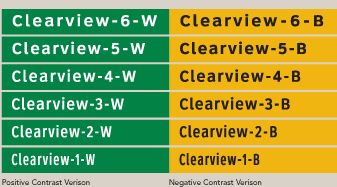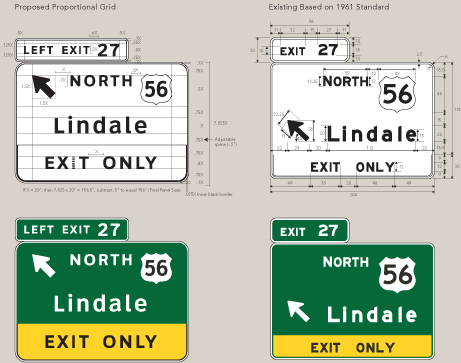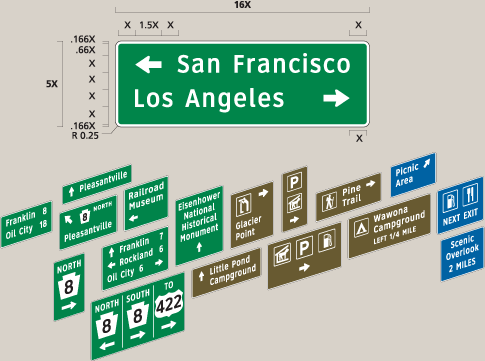The development of Clearview Type System has been recognized worldwide. Conceived in 1992 as a program to improve legibility and ease of reading for older drivers, our design of the Clearview typeface provides approximately a 20 percent gain for all drivers with little or no change in sign size. The design eliminates halation and out-performs all upper case with mixed case of same size. The project has been a partnership with the Larson Pennsylvania Transportation Institute (LPTI), Terminal Design Inc., and support from 3M Company. Clearview was given interim approval for positive contrast applications by FHWA (2004). Negative contrast research is ongoing.
This project had a series of goals that included elimination or control of halation or overglow when headlamps shine on high brightness materials and quantification of the difference between mixed-case legends and all upper case on guide signs to learn if mixed-case legends would aid recognition and understanding and improve legibility for older drivers and all drivers. Arthur Breneman, Chief of Traffic Engineering and Operations for PennDOT (ret.) said: "The creation of the Clearview Typeface is one of the most significant developments in highway signing in the past 30 years."
Our freeway grid proposes a uniform alternative to fixed measurements that were not proportional to primary legend sizes. This is based on simple kit of proportions that creates a uniform layout regardless of the complexity or amount of information. For conventional roads, this system allows uniform road guidance, recreational and cultural area interest signs, and motorist services signs to accommodate a common relationship of legend to panel to aid readability and consistency while using mixed-case legends in lieu of all upper case legends.
Our freeway grid proposes a uniform alternative to fixed measurements that were not proportional to primary legend sizes. This is based on simple kit of proportions that creates a uniform layout regardless of the complexity or amount of information. For conventional roads, this system allows uniform road guidance, recreational and cultural area interest signs, and motorist services signs to accommodate a common relationship of legend to panel to aid readability and consistency while using mixed-case legends in lieu of all upper case legends.
